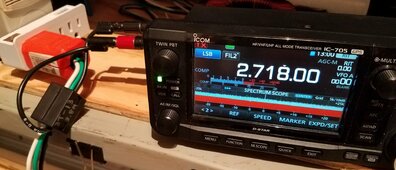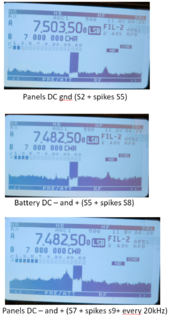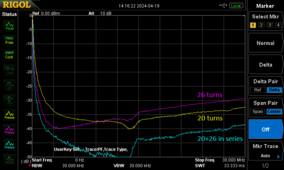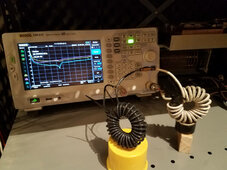Hedges
I See Electromagnetic Fields!
- Joined
- Mar 28, 2020
- Messages
- 20,795
I'm a bit lost to be honest, I'm not so advanced in electronics sadly ...
If I recap, you suggest twisting N + L + G and wind them in the same toroid on AC-output, right ? Same for DC-panels-input or not ?
No I don't, I have a little oscilloscope though, if it can be any usefull.
Do you mean something like this ?
View attachment 208684
I could build one I guess.
Something like that. Maybe that shielded coax is better by rejecting voltage coupling.
I've tried a simple loop of wire, later bought a couple near-field HP probes. But I got better results using a pre-amp as well. Voltage sensitivity of some oscilloscopes is only about 1mV. The conducted EMI on AC limit per FCC is about 1mV.
If your scope has FFT, that can pick up tones well below the noise floor, extending dynamic range.
(surprising, but it works. It can see signals 1/10th of one ADC LSB.)
Just a loop of wire held in parallel with each suspect cable or wire should pick up inductively coupled current. That way you could figure out which cable is the radiator - AC, PV, battery, communications.
Or feed into your receiver, which has no trouble seeing the even smaller signal at a distance.







